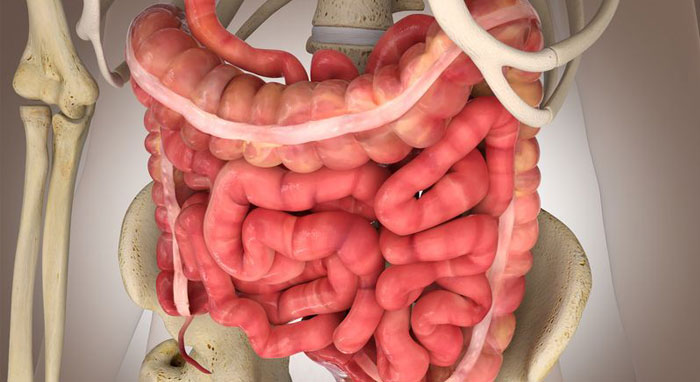The small intestine is roughly 20 feet long and spread flat could cover the size of a tennis court. It is at this crucial point that digestion is completed and much of the absorption takes place.
The structure of the small intestine is crucial for the absorption of nutrients. By having a wave like structure with hundreds of finger like protrusions and millions of more finger like protrusions from them, this increases the surface area exponentially. These finger like protrusions are known as villi and microvilli, all of which are one cell thick and allow for the absorption of nutrients, blocking the absorption of substances that we do not want entering the body and also producing enzymes to further help the digestive process.
Think of the microvilli and villi as millions of bouncers preventing bad people coming in a club and allowing good people to come in after a little frisk.
Unfortunately some of the things we consume, such as certain foods, chemicals, medications and so forth can effectively prevent the bouncer like microvilli from doing there job correctly, and this can allow foreign substances to enter the body and potentially cause immune and inflammatory responses. This phenomenon has been known as leaky bowel syndrome or intestinal hyperpermiability.
Most of your nutrient absorption takes place in the 3 main sections of the small intestine. In the first part of the small intestine, the duodenum, it still should have a fairly acidic environment which helps with the absorption of many minerals, certain water soluble vitamins such as many of the B vitamins and vitamin C and fat soluble vitamins, such as A, D, & E, thus poor HCl in the stomach can still have negative effects on the absorption of nutrients further down the chain. Much fat is absorbed in this section of the small intestine as well along with some carbohydrate absorption. This section and the overall digestion and absorption process are heavily reliant upon the pancreas and liver/gall bladder functioning optimally.
Proteins and carbohydrate digestion and absorption continue in the jejunum, and then in the final phase in the ileum it finishes the job of digesting many nutrients including B12 and dietary cholesterol. The colon then completes the job by absorbing water, salt, vitamin K, short chain fatty acids and potassium.
Once you have a better understanding of where certain nutrients are absorbed, signs, symptoms and lab tests demonstrating insufficiencies may give indications of where or whether a digestive dysfunction is present.
Contact Steve Grant Health
To learn more out how Steve Grant Health can assist you on your journey, please fill out the enquiry form below.
Please note that depending on your specific circumstances and goals, Steve may recommend that you work with one of the specialist practitioners within his network of trusted professionals.
If you have been referred by a clinician, please complete the form and ensure that you state who has referred you or have your practitioner email Steve direct to make a referral that way.
Click the button below to open the client enquiry form:
[widgetkit id=”643″]


